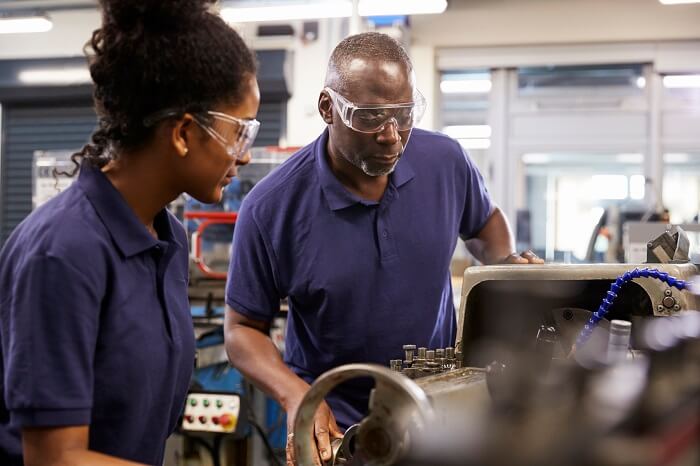Four Focus Areas to Make Manufacturing Safe for Workers
Celebrate Manufacturing Day by prioritizing safety.
Celebrate Manufacturing Day by prioritizing safety.

Workers in the manufacturing industry can face many dangers on the job, from working with heavy machinery, conveyor belts and combustible liquids to operating in noisy, fast-paced warehouses and production plants with many moving parts.
It may not be a shock to learn that the manufacturing industry saw more than 400,000 nonfatal injuries and illnesses on the job in 2016, the third-highest by industry. These injuries, however, do not have to be the reality. By focusing on a few crucial safety issues, manufacturing employers can identify hazards and shield their workers from injury.
No one should accept a serious injury as just, "part of the job." With Manufacturing Day coming up this Friday, Oct. 5, employers can use these four focus areas to make a difference in the safety of their workers.
1.Ergonomics
Ergonomics is a huge concern in the manufacturing industry, particularly because it includes slips, trips and falls, which are a major risk in all workplaces. Leading edge businesses have a comprehensive ergonomics program and regular assessments to stay aware of potential problems and take action before they get worse.
This is also where embracing automation can help. Automated design methods can contribute to a safer work environment through a refinement of processes and the potential for virtual testing, which can help identify potential ergonomic hazards. And with parts of the build process handled by automation, there are fewer actual persons involved on assembly lines and workstations, making many of the most common safety concerns obsolete.
2.Safety Training
Safety must be a business-wide priority, reaching workers at every level of the organization. In order to accomplish this, employers must ensure their safety trainings include remote areas, new and experienced employees, and upper management and executive leadership.
Getting leadership involved and engaged in safety trainings show your workers that you take your responsibility to protect them seriously and that everyone is committed to the goal of reducing injuries and deaths. Though there are many topics to focus on in such trainings – and every employer will have unique safety needs – upper management visibility is key. Leaving managers and executives out of training leaves them uninformed and unprepared, which is a huge mistake.
3.Vehicle Telematics
Driving is the number one cause of death for workers, so it’s a risk employers cannot afford to ignore. Fortunately, the solutions don’t have to be expensive or difficult. If your workers drive on the job, vehicle telematics can be used to monitor driver behavior, giving employers the opportunity to identify risks and reward safe drivers.
In addition to on-the-job driver safety, employers should encourage their workers to take their safe driving habits back home. Motor vehicle crashes kill more than 40,000 Americans each year and a worker who is injured off the job still has an effect on the workplace. Employers can help by raising awareness of roadway risks and offering guidance in avoiding injuries behind the wheel.
4.Leading Indicators
A final focus area for manufacturing businesses involves rethinking the ways in which they analyze their safety performance. If safety becomes simply a box to check, employers and their workers risk taking shortcuts or avoiding reporting injuries, which creates a cycle where hazards are not identified or resolved and employees are put at risk. Instead, manufacturers should consider developing a unique method to evaluate overall safety performance.
This includes making sure that everything is reported, no matter how small. A strong safety record with few serious injuries is not as impressive if your workforce is burdened by smaller, unreported injuries. You should also focus on rewarding positive safety behaviors and always be on the lookout for scenarios or practices which could eventually lead to injuries and fatalities. When safety is prioritized from the top down, these injuries can be prevented and lives can be saved.
Safety practices and equipment should never be seen as obstacles or annoyances, but instead as the right way to handle a day’s work. As employers look to inspire and hire tomorrow’s engineers and manufacturing workers, safety must be a priority from day one.
With a century-long legacy, the National Safety Council is a global center for safety expertise. Let's work together to align resources. We look forward to learning about ways we can join efforts to expand safety everywhere!
There are no items in your cart